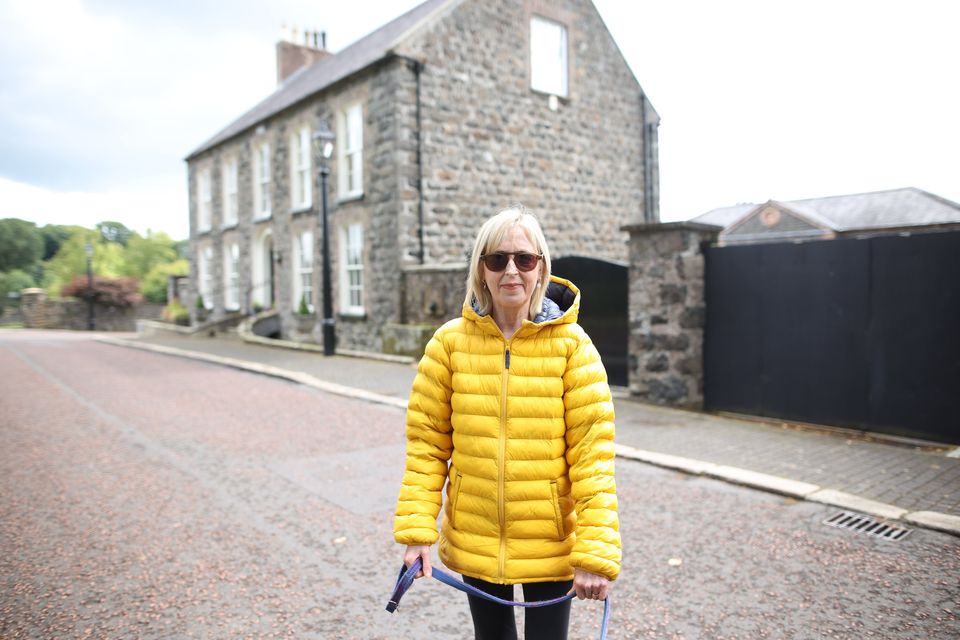Antrim village awarded Unesco World Heritage status ‘so peaceful… you feel a million miles away’

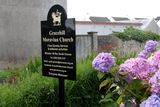
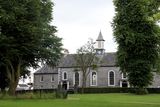
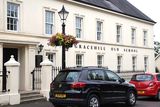

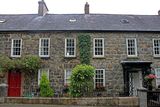
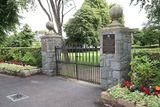

“Gracehill? Sure, there’s not much to Gracehill,” they’ll tell you.
And to the casual passer-by en route to the ‘big smoke’ of Ballymena, it would seem, initially at least, that they’re right.
However, it has now joined the likes of the Taj Mahal and the Great Wall of China on Unesco’s World Heritage List.
It’s a big achievement for a small place.
A couple of hundred yards after being greeted by the welcome sign, you’re out the other side, past the Wrightbus factory and away through Galgorm.
Hidden behind the modern housing development on the edge of the main road, there sits an oasis of historical calm.
Gracehill, which these days is deemed home to around 1,000 people, seems relatively untouched by the traits of modern life — if only you could remove the cars parked around the edges of the hedge-lined square that is the central focus of the village.
Street lighting is provided by old gas-style lanterns. A red post box sits in front of a row of old stone houses. Street signs have white letters on black, not black on white.
Gracehill Moravian Church (Pic: Pacemaker)
Raise your eyes and peer through the leafy branches of overhanging trees and there is no sign of the telephone and electricity wires so common elsewhere. They all had to go underground. It’s all about the look.
Now it’s a Unesco special status site, a few more people could be stopping by to explore the unique historical significance of the village, which was founded 264 years ago and is home to the only complete Moravian settlement in Ireland — and the best preserved anywhere in the UK.
The chairman of Gracehill Trust, David Johnston, was in the Indian capital, New Delhi, for the announcement by Unesco’s World Heritage Committee, along with representatives from the US, Denmark and Germany, who joined the trans-nation honour for four Moravian settlements.
News that Gracehill now sits alongside some of the world’s great landmarks didn’t take long to reach back home, where Bill and Janet Rea are proud to share the village’s secret charm with a new audience.
Read more
The couple live in Gracehill and act as guides for anyone wishing to find out more about what their home village offers.
“For years and years I lived in Ballymena,” said Bill. “I drove by without ever thinking about what lay just off the main road.
“But we moved out here and it’s so tranquil, so peaceful. It’s a lovely, lovely place to call home.”
Janet said they moved to Gracehill 23 years ago.
“I’ll be honest, until we moved here I’d never properly been in Gracehill,” she said.
“Being part of the community here has become such a big part of our lives.
“We do get around 3,000 visitors every year, which isn’t bad for a village that has been such a well-kept secret all this time. I suppose there will be a few more now wanting to find out what this is all about.
“You can see it’s a lovely place to be in, but what a lot of people don’t get are the stories behind the walls, what the Moravian church was really all about and the values it brought. The tours we’re part of bring all of that to life.
“You realise this is about more than simply protecting buildings,” she added. “It’s about protecting the ethos of the Moravian society.”
Janet and Bill Rea from the village of Gracehill (Picture by Peter Morrisony)
Had the walls been able to talk, they would tell you some tales. Like how the mother of one of Ireland’s most famous playwrights, Samuel Beckett, was once admonished for having the audacity to talk to a young man over a garden school wall.
A stained-glass window features John Amos Comenius, a Moravian bishop in the 1600s, who is recognised as the father of modern education.
“In Moravian society, the second most important thing after religion was education,” Janet explained.
“At its height, we had four schools here in the village. Boarding schools for girls, boys and a day school too. In the late 1700s, to be educating girls and poor people was really quite unique.”
Samuel Beckett’s mother was asked to leave the school after her indiscretion. And some of those traits of Moravian morals remain — or, more to the point, are noticeable by their absence.
“There’s no pub, and there can’t ever be a pub,” said Janet.
“When the properties were sold off into private ownership after the First World War, it was written into the leases that they could never be used for the sale of intoxicating liquor or for noisy, offensive business. But at least the golf club is just behind the trees if you’re desperate.
Gracehill, the Moravian village in Co Antrim (Pic: Pacemaker)
“Around a decade ago, a new restaurant opened in the village. The council was ready to grant a drinks licence but the lease prevented it. It’s probably worked in their favour. You can bring your own and they can’t charge corkage.
“There was to be no slaughterhouse either, so we’re not getting a butchers.
“And there are modern houses in the village where Lord O’Neill, who owned all the land, still holds the right to hunt and shoot in the gardens.”
Janet is adamant, though, that World Heritage status won’t change the lifestyle or atmosphere of the village.
“Why would you want to change this anyway?” she said.
“But some of the neighbours are asking if their house prices are going to go up.”
Having lived there for two years, Ruth Johnston provided the the final say: “You feel like you’re a million miles away. It’s perfect.”
Join the Belfast Telegraph WhatsApp channel
Stay up to date with some of Northern Ireland's biggest stories







